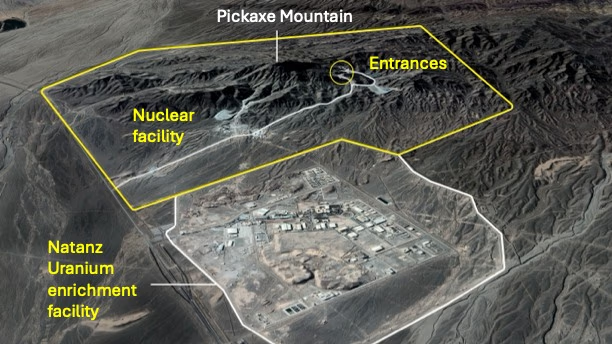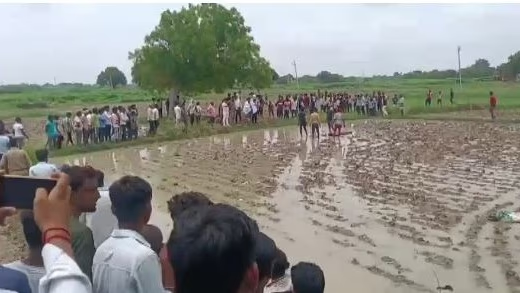Kuh means mountain in Persian, and Kolang translates to pickax. The Persian term Kuh-e Kolang Gaz La resembles a mountain that appears like a pickax, commonly referred to as Pickaxe Mountain in English. The name Kuh-e Kolang Gaz La was relatively unknown until American attacks on Iran’s nuclear centers brought it into the spotlight. Allegedly, Kuh-e Kolang Gaz La is the mountainous area in Iran where enriched uranium was hidden before the American onslaught.
In discussions about Fordo, Isfahan, and Natanz, Kuh-e Kolang Gaz La or Pickaxe Mountain emerges as a new focal point. But where exactly is Pickaxe Mountain, and what is its strategic importance to Iran? Moreover, what is the assessment of this nuclear site by the International Atomic Energy Agency?
According to a report by The Telegraph, when the International Atomic Energy Agency (IAEA) Director-General inquired about activities beneath Pickaxe Mountain, Iran’s curt response was, "None of your business."
Why is Kuh-e Kolang Gaz La or Pickaxe Mountain in the Spotlight?
IAEA Director-General Rafael Grossi’s inquiry is all the more pertinent amid the current climate. Recently, the U.S. deployed B-2 stealth jets to bombard Iran’s nuclear sites at Fordo and Natanz using 30,000-pound bunker-buster bombs. Former President Donald Trump claimed the assault crippled Iran’s nuclear ambitions.
Nevertheless, Trump's assertions were met with skepticism not only by U.S. agencies but also by Iran, which insisted its enriched uranium remains intact.
Prior to the U.S. strikes, sixteen trucks were spotted lining up outside the Fordo nuclear facility. An expert on Iran’s nuclear program told The Telegraph that Iran had already relocated its highly enriched uranium to an undisclosed location before the U.S. bombings.
That secretive site might very well be Kuh-e Kolang Gaz La, also known as Pickaxe Mountain, where Iran's enriched uranium may be stored.
Significantly, Tehran conceals hundreds of locations capable of harboring advanced centrifuges, which are crucial for producing weapons-grade uranium needed for nuclear bombs, according to Seema Shine, an Israeli military veteran with 30 years' experience.
Where is Pickaxe Mountain?
Iran’s relatively new nuclear project, Pickaxe Mountain, is located approximately 225 kilometers south of Tehran and just 90 miles south of Fordo. Its proximity to Natanz is a mere few minutes away.
Also Read: Why Does the World Doubt Iran's Uranium Enrichment Capability?
In April this year, Planet Labs captured satellite images revealing Iran’s gradual excavation activities at Kuh-e Kolang Gaz La, or Pickaxe Mountain, situated a short distance from Natanz’s southern perimeter.
Under the vigilant watch of anti-aircraft guns, the complex's security is managed by Iranian Revolutionary Guard Corps (IRGC) commanders. This nuclear site spans 2.7 square kilometers amid Iran’s central desolate plateaus.
Four Entry Points, 100 Meters Underground
An Associated Press report mentioned that images researched by the James Martin Center for Nonproliferation Studies reveal four tunnels embedded on the mountain's slopes, two facing eastward and two westward. Each tunnel measures 6 meters wide and 8 meters high.
The magnitude of ongoing construction can be inferred from the large mounds of soil.
It is believed Iran might be erecting a nuclear research facility between 80 meters (260 feet) and 100 meters (328 feet) deep.
The nuclear base at Kuh-e Kolang Gaz La is being built beneath a mountain that towers at 1,608 meters high, significantly taller and deeper than Fordo at 960 meters. The depth makes it challenging for even the U.S. GBU-57 bunker-buster bombs to obliterate it.
Experts infer that the scale of Iran’s construction at this underground nuclear center demonstrates it has the capacity not only to enrich uranium but also to fabricate centrifuges here over the past four years as the site expanded further.
Embedded amid rocky terrain, this nuclear hub is deemed more fortified, concealed, and secure.
IAEA Requests Inspection Permission
In April, IAEA Director-General Rafael Grossi stated that since it is evident the site is witnessing various program-related activities, "We are asking them, 'What is it for?' and they keep telling us, 'It’s none of your business.'"
On Monday, Grossi urged Iran to permit IAEA inspectors to review Fordo, Isfahan, and Natanz to ascertain the status of enriched uranium.
Suspicion surrounding Pickaxe Mountain escalates as, according to the Institute for Science and International Security, Iran could clandestinely deploy several thousand advanced centrifuges within its new tunnel complex, sufficient to sustain uranium enrichment, even if all known sites were annihilated.
Advisors to Iran's Supreme Leader Ayatollah Ali Khamenei, such as Ali Shamkhani, conveyed, "Even with the complete obliteration of our sites, the game isn't over, as enriched materials, indigenous knowledge, and political will endure."
Iran’s Deputy Foreign Minister, Majid Takht-Ravanchi, refuted assertions that Tehran would abandon its nuclear program, stressing to Germany's news agency ARD that "no one can dictate what we should or shouldn't do."
Ongoing activities and heightened security precautions near Pickaxe Mountain imply that Iran may activate this site shortly.




